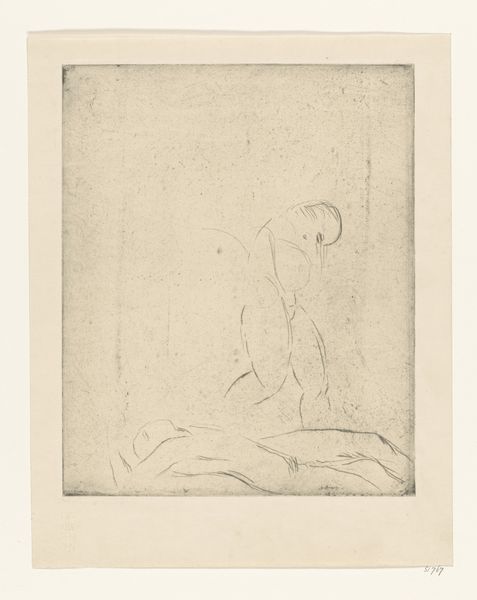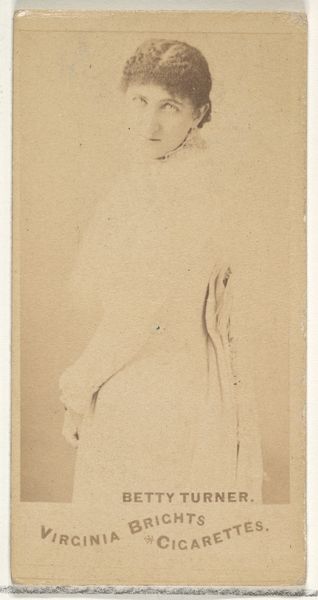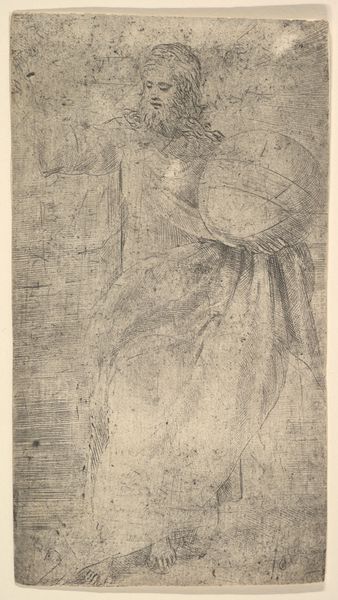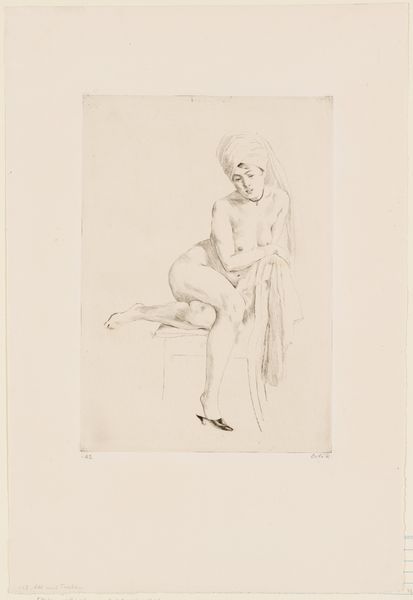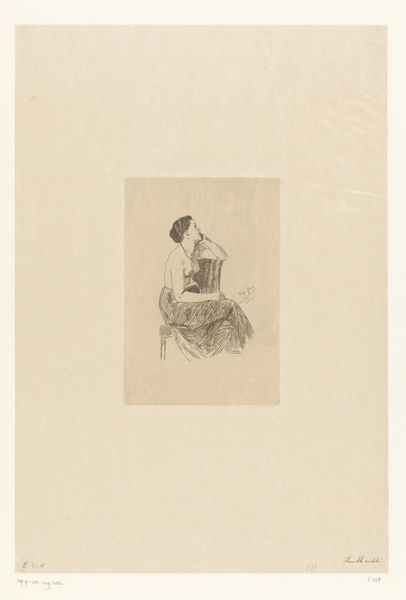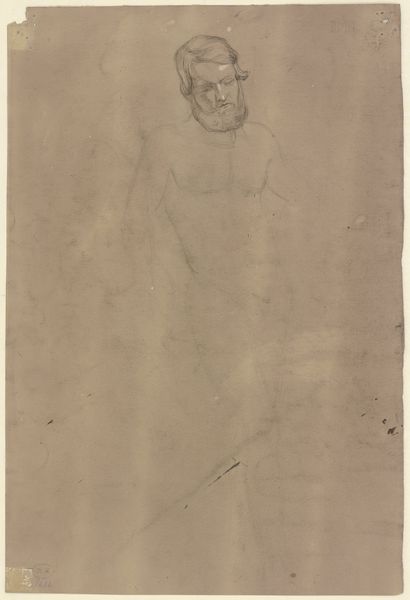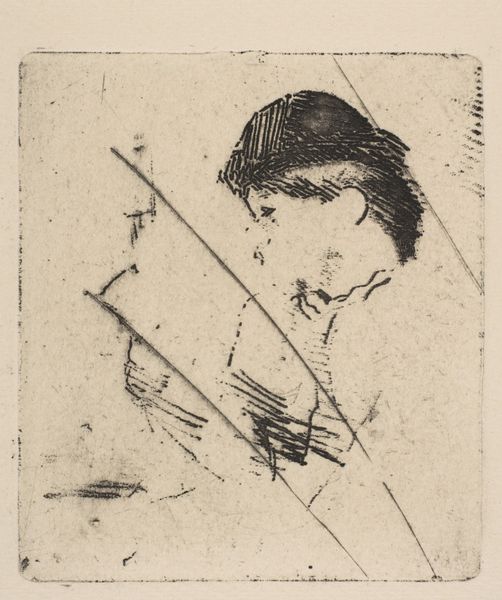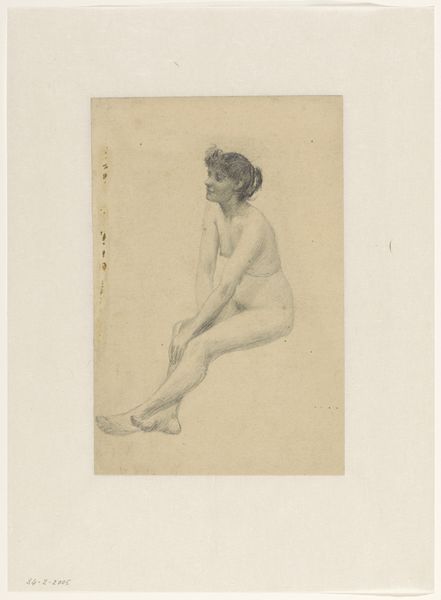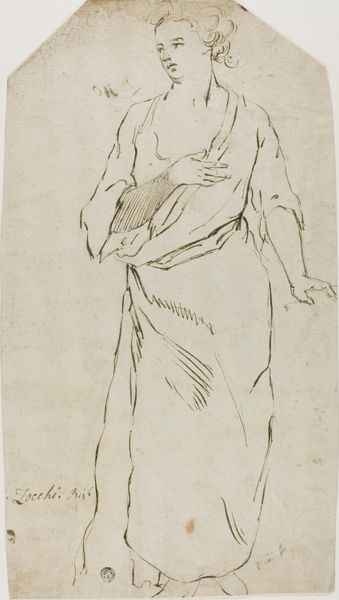
Dimensions: height 327 mm, width 233 mm
Copyright: Rijks Museum: Open Domain
Editor: This is "Vrouwelijk naakt, op de rug gezien," or "Female Nude, Seen from the Back," a drawing in ink and pencil by George Hendrik Breitner, around 1891-1892. I’m immediately struck by its stark simplicity; it’s so minimal. What do you see in this piece? Curator: Breitner's choice to depict the nude from the back carries significant weight. The averted gaze prevents a direct connection, which both protects the subject and perhaps intensifies the viewer's observation. It also opens up space for projection—what inner life do you imagine for her? Editor: I suppose it feels less confrontational, maybe more vulnerable? I keep thinking about that line along her back, how sharp and definite it is, versus the looser, less defined rendering of the rest of the figure. Does that contrast mean anything? Curator: Precisely! It's a striking element. The deliberate contrast could signify the spine as the backbone, the structure holding her up. It could reference cultural ideas about women and how much is demanded of them by social roles. There is also, of course, a tension created by such definite line in contrast to the nude. What’s created for you? Editor: A feeling of both strength and fragility. The definite lines suggest a groundedness, but the fading suggests something ethereal. Thanks, that makes it much more impactful. Curator: It makes you wonder about who we are when no one can see our face, and perhaps also a reflection on Breitner’s interiority. We see echoes of enduring themes in the symbol. Editor: So true; I didn't think about it that way at all.
Comments
No comments
Be the first to comment and join the conversation on the ultimate creative platform.
